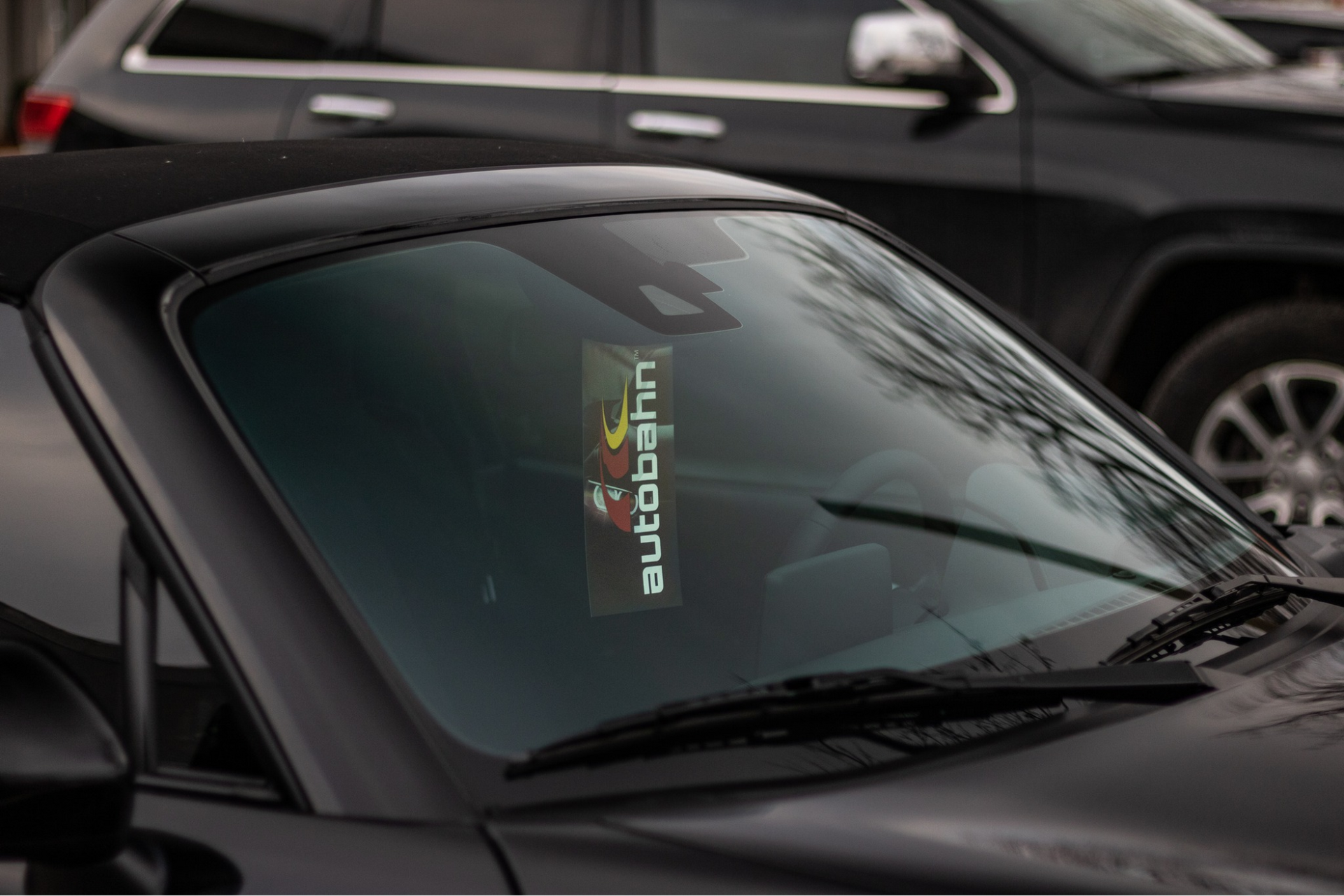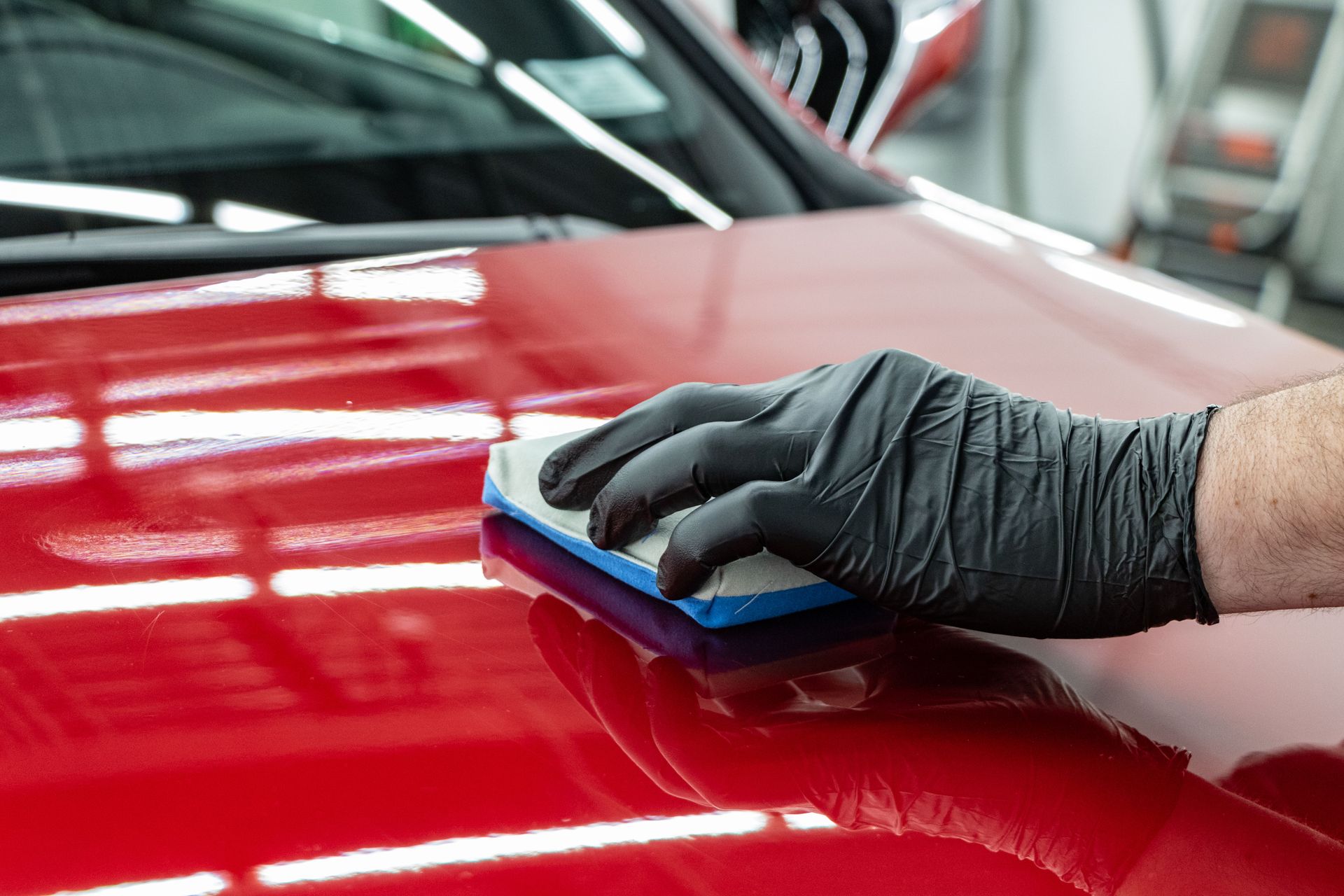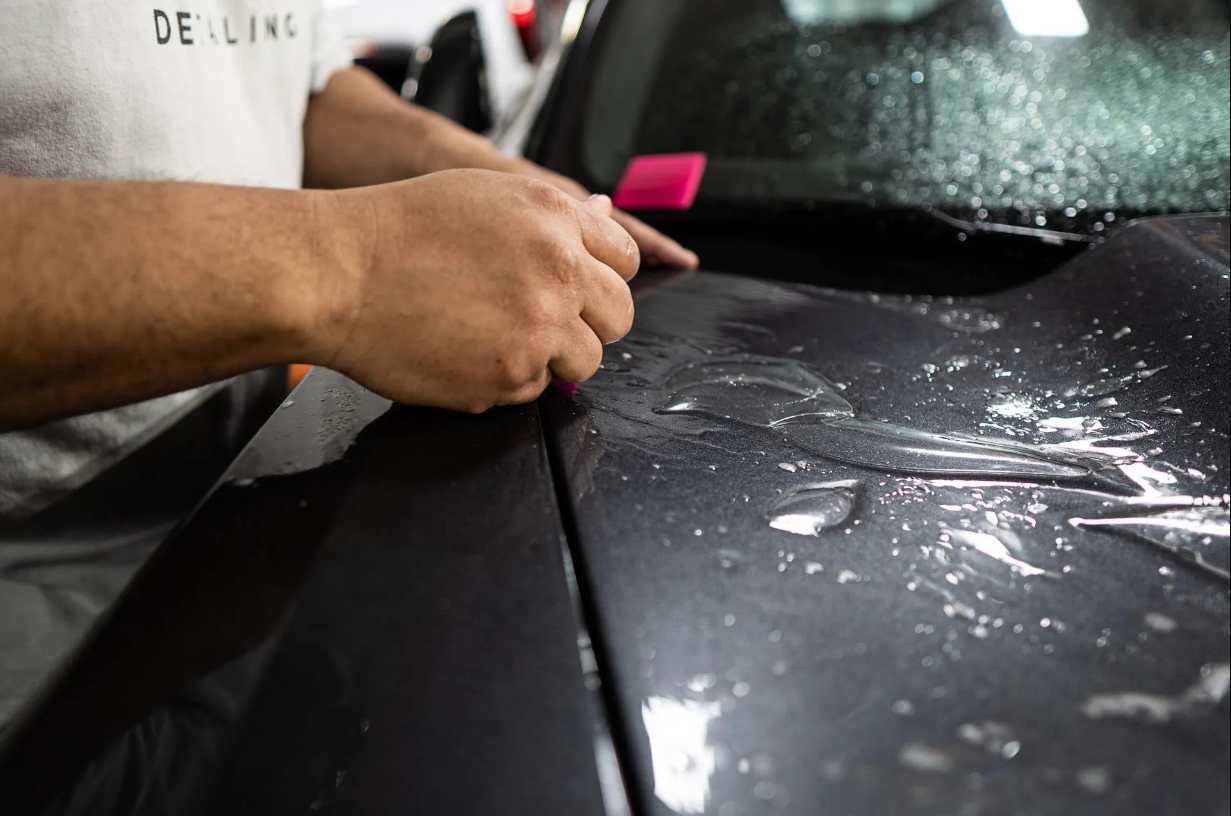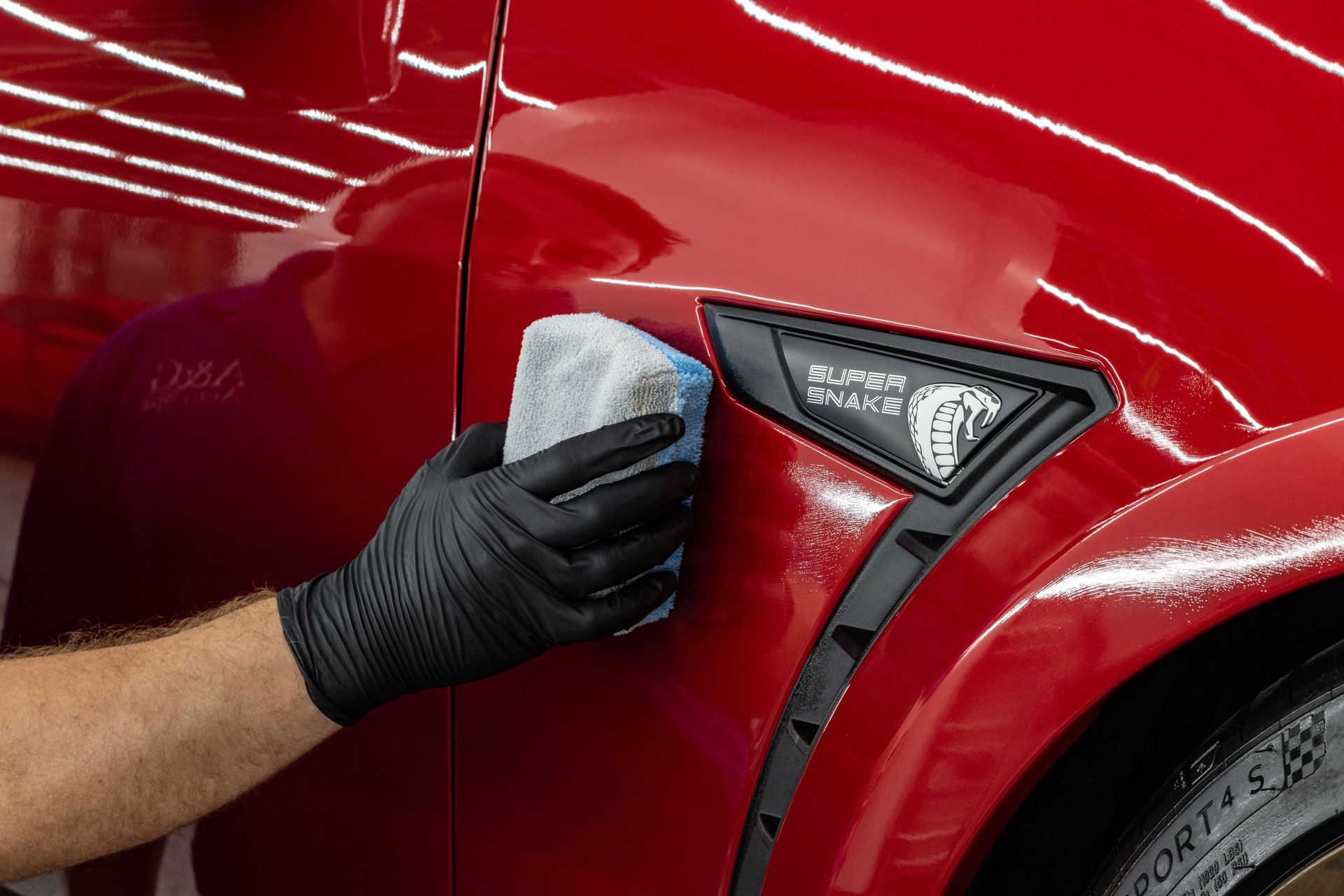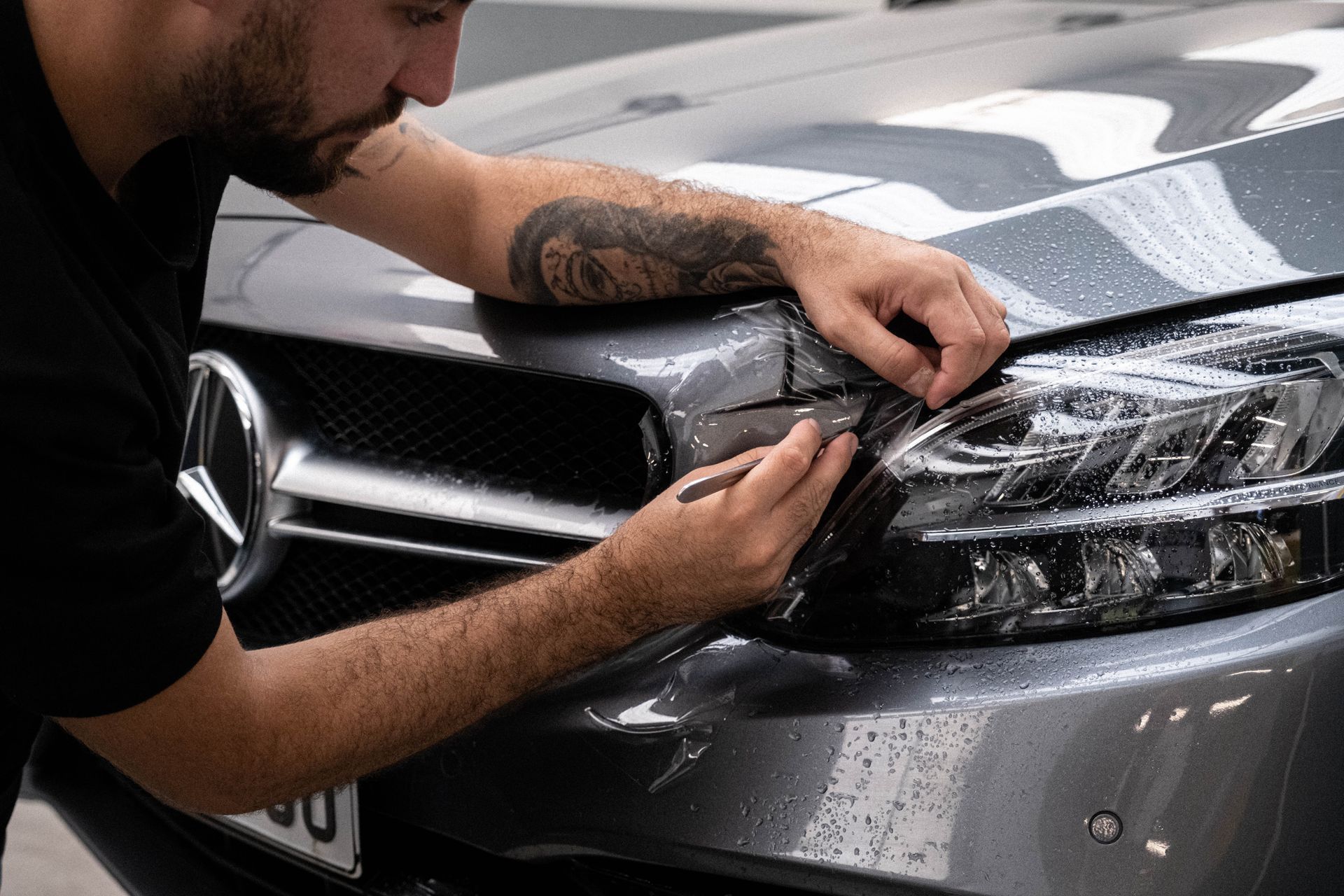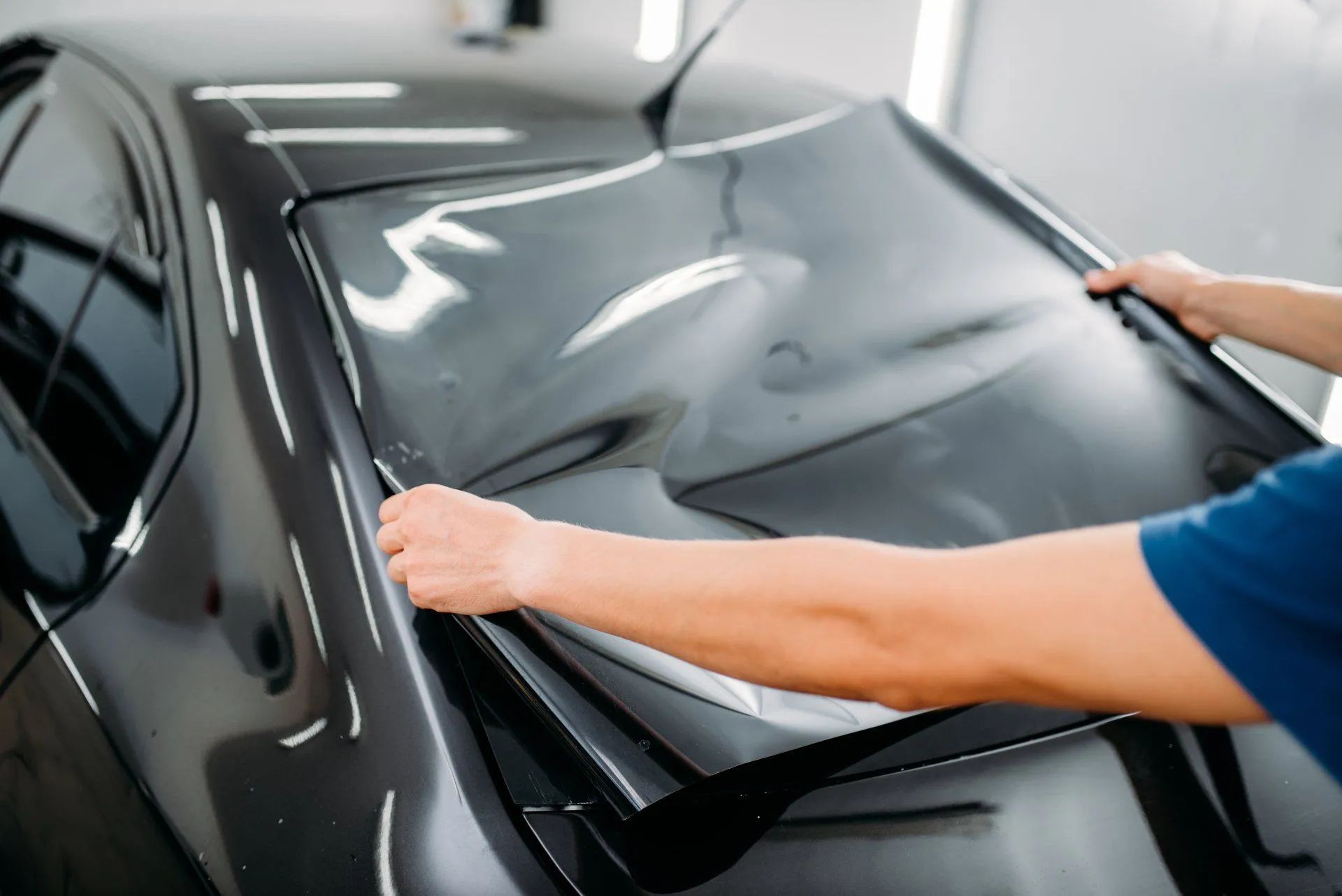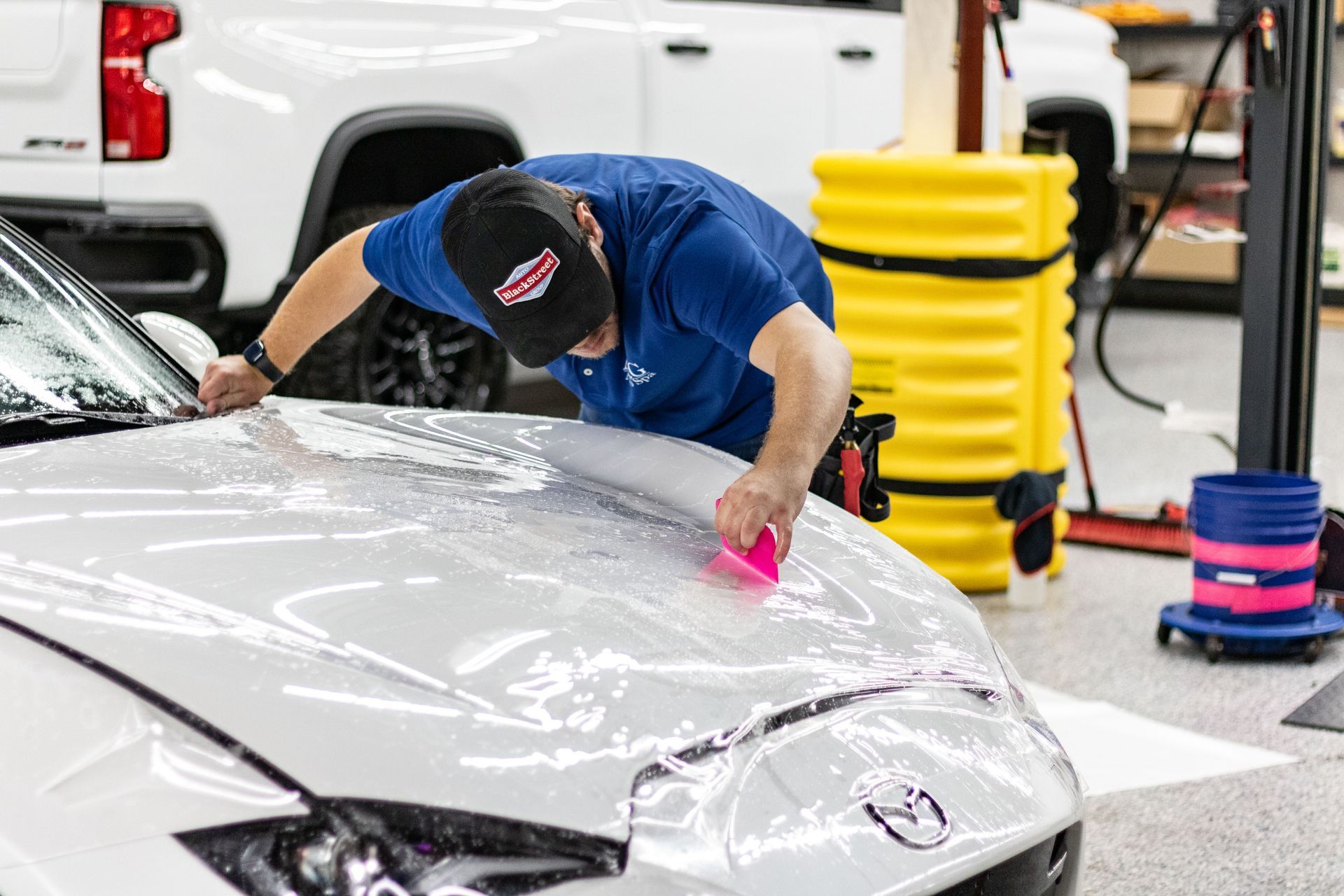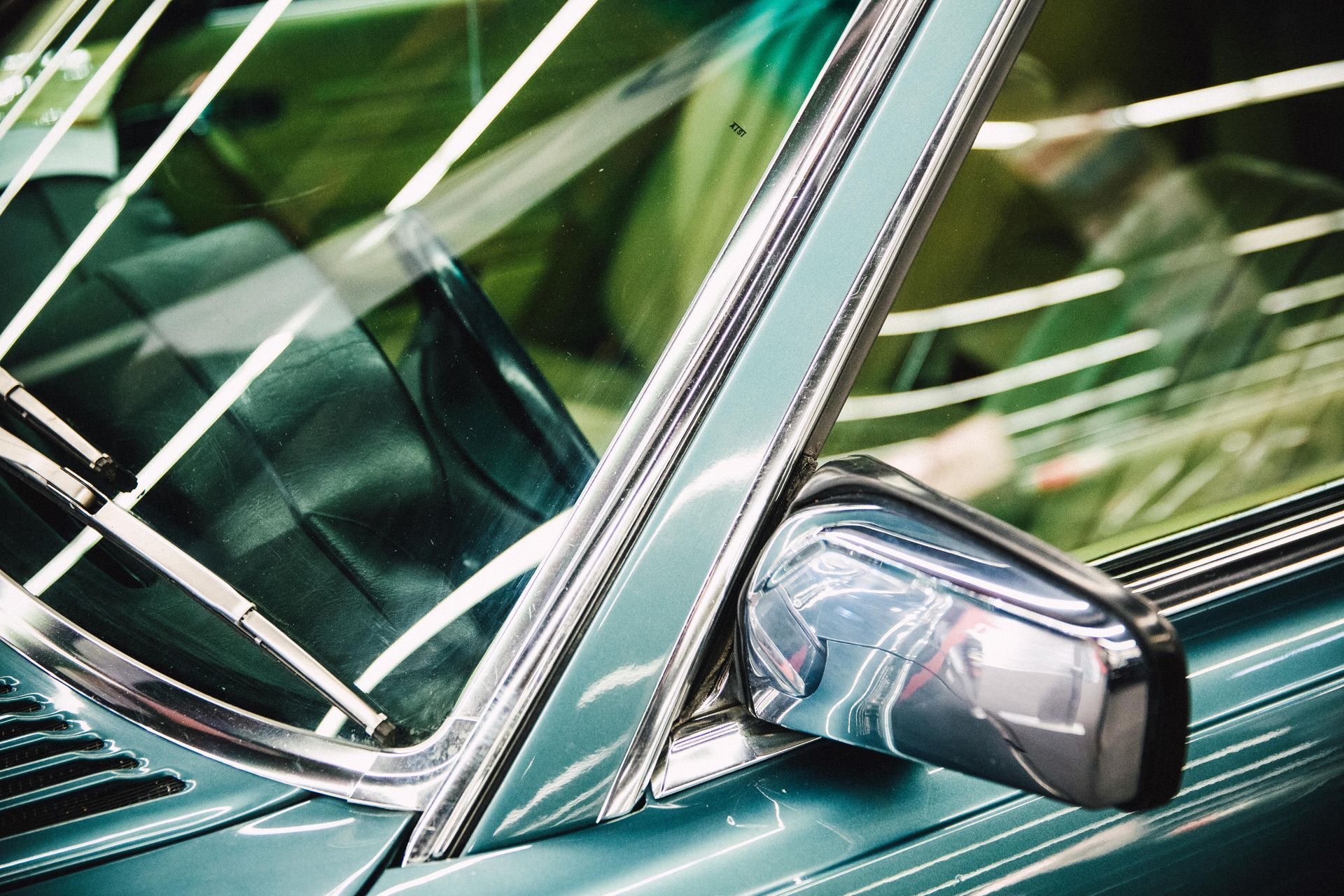Clear Film vs Tinted Options: Choosing the Best Windshield Protection
You're ready to protect your windshield from rock chips and road debris, but now you face another decision—clear or tinted protection film? Both options shield your glass from damage, but they deliver different benefits beyond basic protection.
Clear windshield protection film remains the most popular choice for its invisibility and legal simplicity, but tinted options offer additional benefits that appeal to many drivers. The right choice depends on your priorities—whether you value maximum clarity, UV protection, glare reduction, or aesthetic preferences.
Appearance and Aesthetic Differences
The most obvious difference between clear and tinted windshield protection films is their appearance, which affects both your vehicle's look and your view through the glass.
Clear windshield protection film is designed to be virtually invisible once installed. Quality clear films don't alter the appearance of your windshield or affect how your vehicle looks from the outside. This invisibility makes clear film the preferred choice for drivers who want protection without visual changes.
Tinted Options: Add a subtle darkness to your windshield, similar to window tinting on side windows. The degree of tinting varies by product, with some offering light tints that are barely noticeable and others providing more substantial darkening.
From inside the vehicle, clear film maintains your original view with no perceptible difference. Tinted films slightly darken your view, which some drivers find beneficial in bright conditions, but others may find distracting, especially during night driving.
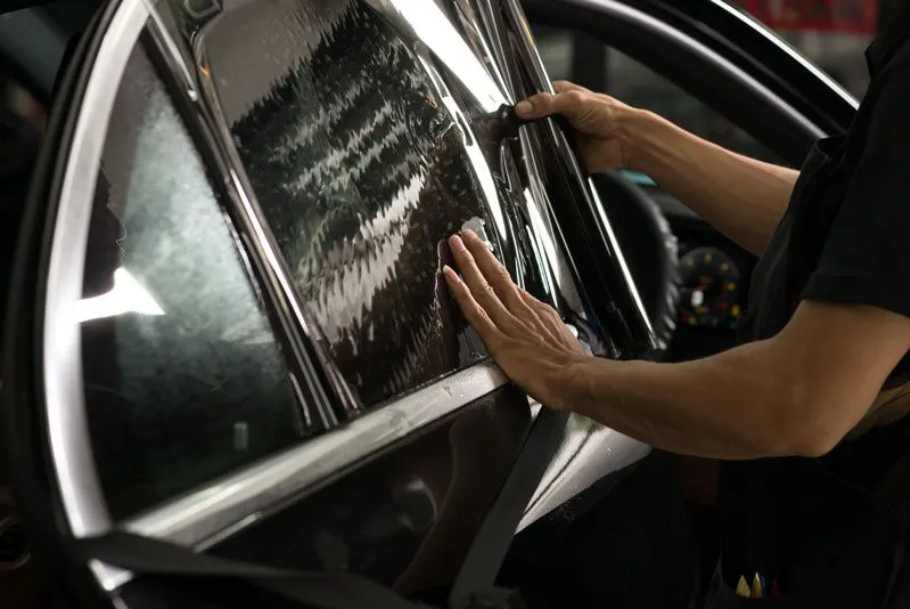
UV Protection Capabilities
Both clear and tinted films offer UV protection, but the level of protection and how it's delivered differ between the two options.
Clear Film UV Protection: Modern clear windshield protection film includes UV inhibitors that block harmful ultraviolet rays without adding visible tint. These films typically block significant UV radiation while maintaining complete transparency.
Tinted Film UV Protection: Tinted films generally provide higher levels of UV protection because the tinting agents themselves contribute to blocking UV radiation in addition to any UV inhibitors in the film. This makes tinted options attractive for drivers, particularly concerned about sun exposure.
Both options protect your interior from UV-related fading and reduce your skin's exposure to harmful rays during driving.
Glare Reduction and Driving Comfort
Glare from the sun, oncoming headlights, and reflective surfaces can significantly impact driving comfort and safety.
Clear Film Performance: Clear film provides minimal glare reduction. While the film's surface properties may slightly affect how light refracts, clear film doesn't significantly reduce the intensity of bright light passing through your windshield.
Tinted Film Performance: This is where tinted options shine. The darkening effect naturally reduces glare from all sources, making daytime driving more comfortable in bright conditions. Many drivers report less eye strain and fatigue during long sunny drives.
However, this glare reduction comes with a tradeoff. Tinted films can reduce visibility in low-light conditions, during dawn and dusk, and at night. This visibility reduction is the primary reason many drivers choose clear film despite the glare reduction benefits.
Durability and Protection Performance
When it comes to protecting your windshield from chips and cracks, both clear and tinted films perform similarly when comparing equal quality products.
The protective properties come from the film's thickness, material composition, and adhesive system rather than whether it's clear or tinted. Both options absorb impact energy, distribute stress across the glass surface, and help prevent crack propagation.
Both options maintain their protective properties throughout their lifespan when properly maintained. The durability difference between clear and tinted is negligible when comparing similar quality products.
Legal Considerations and Regulations
This is perhaps the most critical factor for many drivers considering tinted windshield protection film.
Clear Film Legality: transparent windshield protection film faces virtually no legal restrictions. Since it doesn't alter the light transmission through your windshield, it complies with regulations in all areas. This universal legality makes clear film the worry-free choice for drivers who travel between different jurisdictions.
Tinted Film Regulations: Windshield tinting laws vary significantly by location. Many areas restrict how dark a windshield tint can be and where on the windshield tinting is permitted. Common restrictions include:
- Maximum darkness levels measured by visible light transmission
- Limits on tinted area (often restricted to the top few inches)
- Complete prohibitions on windshield tinting beyond the AS-1 line
Before choosing tinted windshield protection film, research your local regulations. Professional installers at A&G Auto Spa can advise on legal options for your location.
Violating tinting laws can result in citations, failed vehicle inspections, and the need to remove the film entirely.
Visibility in Different Driving Conditions
How these films perform across various driving conditions significantly impacts your daily driving experience.
Daytime Performance: Clear film provides unchanged visibility in bright conditions, while tinted film offers enhanced comfort by reducing brightness and glare. For daytime-only drivers or those in consistently sunny climates, tinted options may provide superior comfort.
Night Driving: This is where clear windshield protection film has a decisive advantage. Clear film doesn't reduce light transmission, maintaining optimal visibility in low-light conditions. Tinted film can make night driving more challenging.
Variable Conditions: Drivers who encounter diverse lighting conditions – commuting before sunrise and after sunset, driving through tunnels, or navigating tree-lined roads – generally fare better with clear film's consistent visibility.
Matching Film Type to Your Driving Needs
Different driving patterns and priorities make certain film types more suitable for specific situations. Understanding how your daily routine and preferences align with each option helps narrow down the right choice.
Clear Film Works Best For: Drivers who value unrestricted visibility across all conditions tend to prefer clear protection. Those who commute during early morning or evening hours benefit from the unaltered light transmission. Clear film also eliminates concerns about legal complications when traveling across state lines or through areas with varying tinting regulations. If maintaining your vehicle's factory appearance matters to you, clear film preserves the original look completely.
Tinted Film Appeals To: Drivers who spend most of their time on the road during daylight hours often appreciate the comfort benefits tinted film provides. If you find yourself squinting or experiencing eye fatigue during sunny drives, the glare reduction can make a noticeable difference. Tinted options also appeal to those who want their windshield protection to match their existing window tinting for a cohesive appearance. Just verify that your local area permits windshield tinting before making this choice.
Installation Quality Matters
Regardless of which option you choose, professional installation is crucial for optimal performance and appearance. Poor installation can create bubbles, distortion, or adhesion problems that compromise both protection and visibility.
Quality installation ensures the film conforms properly to your windshield's curves without creating optical distortions. The investment in professional installation protects your larger investment in the film itself. You can explore various protection options, including clear auto bra solutions for comprehensive vehicle protection.

Choose the Right Windshield Protection for Your Driving Style
The choice between clear windshield protection film and tinted options comes down to balancing protection, comfort, legality, and visibility. Clear film offers universal legality, maximum visibility in all conditions, and invisible protection. Tinted film provides enhanced glare reduction, superior UV protection, and aesthetic appeal.
For most drivers, clear film represents the safer choice due to its legal compliance and optimal visibility in all driving conditions. However, drivers who primarily operate in bright daytime conditions and live in areas where windshield tinting is legal may find tinted options more beneficial.
Professional assessment is key to making the right decision. The experts at A&G Auto Spa can evaluate your specific needs, driving patterns, and local regulations to recommend the option that best fits your situation.
Ready to protect your windshield with certified installation? Contact A&G Auto Spa in Maryland Heights for expert recommendations and professional protection film installation tailored to your needs
Frequently Asked Questions
Is clear windshield protection film completely invisible?
Quality clear film is virtually invisible once professionally installed. While it's technically present on your windshield, it doesn't alter the appearance or noticeably affect your view through the glass under normal conditions.
Can I legally use tinted windshield protection film in my state?
Windshield tinting laws vary by location. Many states restrict or prohibit windshield tinting beyond a certain line. Check your local regulations before choosing tinted film, and consult with professional installers who understand regional laws.
Does tinted film significantly reduce night visibility?
Yes, tinted windshield film reduces light transmission, which can make night driving more challenging. The degree of impact depends on the tint's darkness, but most drivers notice reduced visibility in low-light conditions.
Which option provides better protection against rock chips?
Both clear and tinted films provide equal protection when comparing similar quality products. The protective performance comes from the film's material and thickness, not whether it's clear or tinted.
Can I switch from tinted to clear film later if I don't like it?
Yes, windshield protection film can be removed and replaced. However, this requires professional removal to avoid damaging your windshield, and you'll need to pay for new film installation, making the initial choice important.

